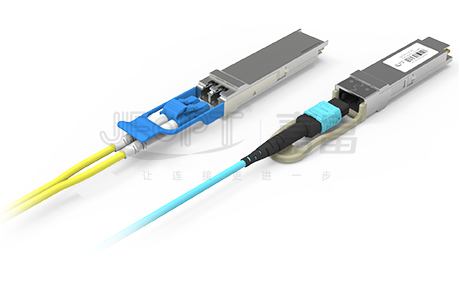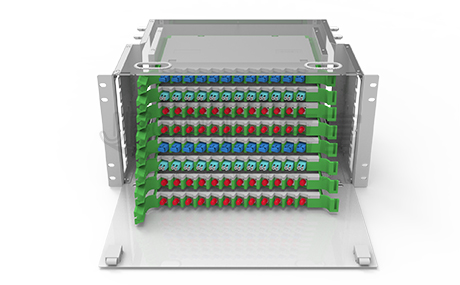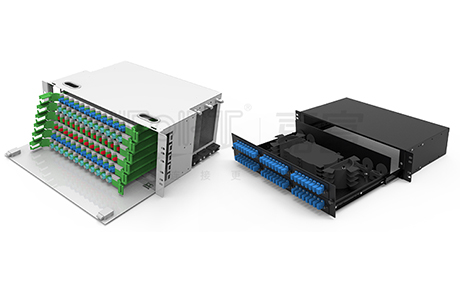All-Optical Network (AON): Refers to a network where optical information flows are transmitted and exchanged solely in the form of light, without the need for optical/electrical or electrical/optical conversion. It achieves random storage, transmission, and exchange processing of signals directly in the optical domain, eliminating traditional electrical nodes and adopting optical nodes instead. The entire network is built on the foundation of optical fibers, establishing a direct optical communication network. This is a broadband network that relies entirely on optical wave technology for information transmission and exchange. Such a network achieves end-to-end all-optical paths without the intervention of optical-electrical converters throughout, ensuring efficient and stable information transmission.
 Characteristics of All-Optical Networks
Characteristics of All-Optical Networks
1.Bandwidth Leap: In an all-optical network, transmission and exchange of information are completed entirely through optical fibers without the need for optical-electrical or electrical-optical conversion, significantly enhancing network speed. Compared to traditional telecommunications networks, all-optical networks demonstrate robust throughput capabilities. According to statistics, bandwidth accessed through copper wires is limited to 512Kbps, whereas the broadband bandwidth of an all-optical network can easily reach 50 to 100Mbps, or even higher, providing users with a smoother network experience.
2.Simple Structure: The design of all-optical networks is straightforward. They employ end-to-end transparent optical pathways without the need for optical-electrical conversion or storage processes, ensuring enormous transmission capacity and excellent transmission quality. This simplified structure not only enhances network efficiency but also provides users with a more stable and high-quality network experience.
3.Greater Openness: All-optical networks demonstrate higher levels of openness. In an optical network environment, routing selection is based on wavelengths, allowing compatibility with signals of different rates, protocols, modulation frequencies, and formats. Additionally, all-optical networks offer end-to-end services without restrictions, providing users with a more flexible and unrestricted network usage experience. This high level of openness not only enhances network scalability but also improves its adaptability in various application scenarios.
4.Passive Nature of All-Optical Networks: In the processing of optical signals, numerous optical components are designed to be passive. This characteristic greatly facilitates network maintenance work and significantly enhances network reliability. The use of passive optical components not only reduces failure rates but also lowers maintenance costs, making all-optical networks more stable and reliable in operation.
5.Excellent Scalability of All-Optical Networks: With the utilization of virtual wavelength path technology, the addition of new nodes does not require any impact on the existing network and equipment, facilitating network expansion directly. This design not only saves valuable network resources but also effectively reduces network costs, providing great convenience for future network upgrades and expansions.
6.Outstanding Reconfigurability of All-Optical Networks: They can flexibly adjust network structures according to business requirements, swiftly establishing direct optical pathways for nodes with high traffic volumes. This design enables flexible wavelength utilization between different nodes, facilitating dynamic reconstruction of wavelength routing selections, network interconnections, and self-healing functions. This characteristic significantly enhances the flexibility and adaptability of all-optical networks, enabling them to cope with various complex business scenarios and changes.

Main Technologies of All-Optical Networks
The main technologies of all-optical networks include fiber optic technology, Synchronous Digital Hierarchy (SDH), Wavelength Division Multiplexing (WDM), optical switching technology, Optical Cross-Connect (OXC), passive optical network technology, and optical fiber amplifier technology. These technologies collectively constitute the core of all-optical networks, enabling high-speed, low-loss, low-latency, and highly reliable data transmission.
Firstly, fiber optic technology serves as the foundation of all-optical networks, utilizing optical waves to transmit signals in optical fibers, offering advantages such as wide bandwidth, low attenuation, and strong interference resistance. SDH is a digital transmission system that provides corresponding information structures for the transmission of digital signals at different rates, including multiplexing methods, mapping methods, and related synchronization methods.
Secondly, WDM technology allows multiple optical signals of different wavelengths to be transmitted simultaneously on the same optical fiber, greatly improving the utilization of optical fiber bandwidth. Optical switching technology enables routing and forwarding of optical signals in the network without the need for optical-electrical conversion, thus significantly enhancing network flexibility and efficiency. OXC is one implementation of optical switching technology, capable of optical signal cross-connection and routing selection.
Furthermore, passive optical network technology utilizes optical splitters to distribute optical signals to various users without the need for power supply and other active equipment, reducing network costs and maintenance difficulties. Optical fiber amplifier technology is used to address signal attenuation issues in long-distance transmission, maintaining signal quality.
The comprehensive application of these technologies allows all-optical networks to overcome the bottlenecks of traditional networks in transmission and exchange, reducing congestion and latency in information transmission, and improving network throughput. Moreover, all-optical networks exhibit good openness and compatibility, capable of accommodating signals of different rates, protocols, modulation frequencies, and modulation methods, and allowing different types of devices to share optical fiber infrastructure.
All-optical networks are attracting considerable attention in the new generation of broadband technologies. With the vigorous development of Internet services and multimedia applications, network traffic is experiencing exponential growth, placing higher demands on networks: they need to have strong high-bit-rate data transmission capabilities and large throughput cross-connect capabilities. Especially in scenarios where optical fiber distances are remote or optical fiber resources are limited, to effectively save valuable optical fiber resources, we strongly recommend adopting an all-optical network architecture. This architecture can fully leverage the advantages of optical networks such as fast transmission speed and long transmission distances, providing stable and efficient network support for various business scenarios.















































































 Ann
Ann












